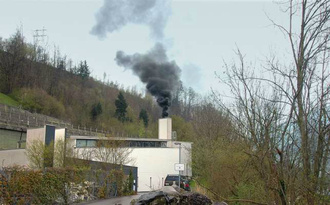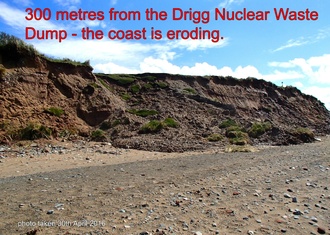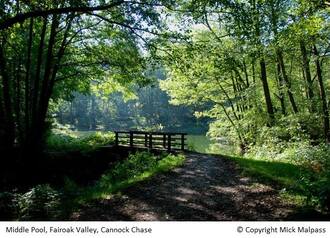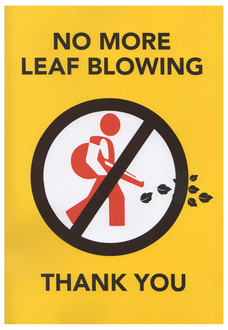-
Scotland: Keep a minimum distance between crematoriums and homes!Would you like to attend the funeral of one of your loved ones only to hear the sounds of a neighbouring barbecue or a loud stereo? Would you like to live next door to a constant funeral procession, with all the associated sounds coming through your windows daily? The Scottish Government is proposing to allow crematoriums to be built and operated directly next to your house in their new Burial and Cremation (Scotland) Bill. The Local Government and Regeneration Committee will meet on January 6th to review their proposals. The Scottish Government have made a huge oversight in their new Cremations and Burials Bill: they have removed the requirement for any minimum distance to be upheld between crematoriums and homes. This is a vital protection for the privacy of mourners and home-owners and a minimum distance must be upheld in law. In the Government's own consultation paper on the bill (which they put out to industry experts to pass comment on their plans) 75% of respondents recommended to keep a minimum distance of 200 yards (see Q11 in this document: https://goo.gl/8PlZ93). The Consultation Report states: "Respondents were strongly in favour of retaining a significant minimum distance. Many who commented considered that the most important factor for retaining a minimum distance was to ensure privacy and dignity for both home owners and mourners. A substantial distance would also ensure adequate provision for memorial gardens and car parking." This petition asks the Local Government and Regeneration Committee to ensure the 200 yard minimum distance is upheld in the new Bill. Already in Haddington, East Lothian, the local planning authority has granted permission for a crematorium to be built in anticipation of the new law - construction has not begun yet but it will soon if the Bill is passed by the Committee this petition is addressed to. For the crematorium in question; there are several neighbouring properties, including a dairy farm. The closest home is only 45 yards away and has bedroom windows below the level of the proposed chimneys in line with the prevailing wind! The proposed car park for the crematorium is directly next to the garden meaning that both the home owners and mourners would have a huge lack of privacy. Imagine walking to your loved-one's funeral and hearing children playing or people laughing? Imagine trying to relax in your garden whilst mourners walk by. Also, emissions from crematoriums are still not entirely understood - particularly and most worryingly in the case of mercury which is present in tooth fillings and is extremely toxic to humans and animals. The Scottish Government hope that by removing the requirement for any minimum distance to be upheld between a crematorium and a home that local planning authorities will make the correct decisions on a case-by-case basis. However, the above development is a case in point that this does not work: East Lothian council owns the building in which the proposed crematorium is to be built and they have wanted to sell it for a number of years. They have agreed a deal with a crematorium developer to sell the building and therefore have a vested interest in ensuring everything goes smoothly in the panning process and, as such, have ignored local businesses and home-owners concerns and ignored all of the numerous negative impacts the development might have. They have abandoned due diligence in the pursuit of profit. If the Scottish Government allows this Bill to pass without upholding the minimum distance of 200 yards which is recommended by it's own consultation then it is condemning not only the people of Haddington but also countless others in future to have their homes and businesses - never mind the funerals all over the country - severely affected. The Government's job is to create legislation to protect people in all aspects life and if this Bill is passed into law without upholding any minimum distance between a crematorium and homes/businesses then the Government will fail in it's duty to the people of Scotland. It is clear that Local Planning Authorities are subject to prejudice and therefore fail to protect the people of Scotland given what has occurred in Haddington, East Lothian in anticipation of the new law being passed. Please uphold the minimum distance of 200 yards!432 of 500 SignaturesCreated by Jamie Murray
-
Lock the Gate on Drigg -No More Nuclear WasteTo describe the UKs nuclear waste site as a “Repository” is putting a spin on the UKs main nuclear dump for "low level" waste. There is "controlled discharge direct to the Irish Sea" not to mention run off to the Drigg Stream and River Irt. Discharges to the air of radioactive gases are ongoing. According to the British Geological Society the Drigg site is above a regional aquifer. It is also "likely to be destroyed by coastal erosion" in 500 to 5000 years (computer modelling can be wrong either way) . Much of the waste is long lived and high risk. Below are a few of the reasons why it is important that Cumbria County Council Lock the Gate on Drigg: Planning Application PL\1508\05 (4/15/9012):The phased construction of additional vaults, higher stacking of containers..capping.. 1. Drigg Low Level Waste Repository (the word nuclear was dropped so as not to scare the horses) would continue to accept nuclear waste for decades to come. "Capping" is misleading. To cap” a nuclear dump is akin to putting a cap on a fizzy lemonade bottle while there are holes in the bottom of the bottle. The site will continue to leach aqueous emissions to groundwater and gaseous emissions to air. 2. LOW LEVEL: This suggests that the waste at Drigg is low risk and short lived. Neither is true. As the University of Reading has pointed out: “The Drigg site uses two disposal systems: 1) An original system operated from 1959 to 1988 comprising a series of parallel trenches excavated into glacial clays, back filled with LLW and covered with an interim water resistant cap. 2) Current disposal of compacted waste placed in steel ISO-freight containers, with void space filled with highly fluid cement based grout. These containers are then disposed of in a series of open concrete vaults. Radionuclides with highest activities in the inventory include 3H, 241Pu, 137Cs, 234U and 90Sr, 238U and 232Th. http://centaur.reading.ac.uk/16608/1/mrspaper.pdf 3. RADIOACTIVE FLY TIPPING: The chemical and nuclear dump site has moved on from the years 1940 to 1988 when chemical and radioactive waste was tumble tipped into trenches. Now the waste is compacted into steel shipping containers filled with cement. Incredibly the containers are stacked high. In 2013 the LLW management wrote: “in containers at the tops of stacks, the external capping grout has undergone extensive physical degradation and settlement; the lids are not full of grout, and the grout is generally heavily cracked. The state of the capping grout in underlying layers is better; most containers only show sparse cracking and typical settlement in the lid is approximately 15 mm. Standing water, sometimes contaminated with low levels of radioactivity, is present in approximately half of the containers at the tops of stacks. ..In containers at the tops of stacks, organic matter has accumulated beneath many open grout ports, with vegetation growing from some grout ports. ..Corrosion, sometimes fully penetrating, is present in some container lids at the tops of stacks…” http://llwrsite.com/wp-content/uploads/2013/11/30-RP-LLWRGR-PROJ-0139-Vault-8-Container-Issues-Project-MAS.pdf 4. FLOODWATER AND SEA INUNDATION: “The Environment Agency has given a formal view that “the potential for disruption of the site is an acceptable risk” By “disruption of the site” they mean inundation by sea and flood. This is a far cry from the Environment Agency's previous criticism in 2005: "BNFL (Now the NDA) has not yet demonstrated that the wider benefits to the UK from continued LLW disposal on this site outweigh the potential future impacts" We would hope that Cumbria County Council agree with the Environment Agency's 2005 findings that that the real and present threat of inundation of the Drigg site by flood or by sea is not an acceptable risk to the people of Cumbria or to our international neighbours. 5. THE COLLAPSE in 1985 of the largest black-headed gull breeding colony in Europe on the Drigg dunes has never been satisfactorily explained. The official explanation is that a fox did it! https://mariannewildart.wordpress.com/2015/12/29/disappearing-trick-birds-and-nuclear-waste/ 6. CHILDHOOD LEUKEMIA is officially blamed on "population mixing" due to the influx of workers firstly to the 1940 explosives factory (Royal Ordnance Factory) at Drigg and then the ROF at Sellafield. The irony of this incredible argument is that the plan for 3 new nuclear reactors at ' Moorside' a few miles from Drigg ('Moorside' is at the village of Beckermet) would involve a boom and bust influx of thousands of workers along with a further tsunami of nuclear wastes and ever more Driggs. https://you.38degrees.org.uk/petitions/stop-moorside-biggest-nuclear-development-in-europe Many of the Councillors expressed serious concerns at the meeting and yet the vote was unanimously in favour which, to campaigners and the wider public, smacks of something very fishy indeed. To rely on the testament of the Environment Agency who merely look at the information provided to them by the industry is reckless. All projections and computer modelling are based on information provided by the operators. Much of the Drigg site is already unable to be accessed for monitoring due to the stacking of containers. At the planning meeting on 15th July 2016 There was no discussion of a. the increased possibility of criticality with an ever increasing radiological burden. The words criticality “will not occur” cannot be applied to Drigg's LLWR : https://mariannewildart.wordpress.com/2016/08/02/drigg-decision-we-are-caught-in-a-trap-no-way-out-because-we-love-nuclear-waste-too-much/ b. the ethics of denying future generations the right to protect themselves, c. whether to warn future generations not to dig or distrurb the poisonous chalice beneath the land. d. the ethics of adding to an already intolerable radioactive burden on this vulnerable coastal site.2,221 of 3,000 SignaturesCreated by Marianne Birkby
-
Stop using Whitsand Bay as a DumpsiteThe environment needs our protection for the future, for generations to come. If you can't explain to a child why it is OK to continue to dump contaminated silt into a pristine sand and sea shell bedded bay, smothering wildlife including protected creatures like the Pink Sea Fan, then it is time to stop trying to justify these actions. The Marine Management Organisation (MMO) has been given a great responsibility - on behalf of us, the environment and future generations. Despite years of campaigning and despite being taken to the High Court resulting in no dumping taking place for the last 13 months, the MMO is about to issue new licenses again. We call upon the Marine Management Organisation to use their responsibility wisely. Would the Rame Head South site - an inherited 100 year old ammunitions dumpsite - ever be taken into consideration as a new dumpsite if an application was put forward now to start using it for the first time in 2016? Of course not! Why? Because it would be ridiculous to do so: too close to shore, devastating sea life, right next to a Marine Conservation Zone (MCZ) with many protected species, very near to a Site of Special Scientific Interest (SSSI) and in an area of outstanding beauty - the Rame Peninsula. Do the right thing: STOP dumping in Whitsand Bay - CLOSE the Rame Head South dumpsite. Whitsand Bay in South East Cornwall is NOT a Dump Site. Recent demonstration: https://www.youtube.com/watch?v=GB_gAcoYGVw https://www.youtube.com/watch?v=Ccnl5L-g1as Licence application and option to directly object: https://www.gov.uk/government/publications/hmnb-devonport-maintenance-dredging849 of 1,000 SignaturesCreated by Tonny Steenhagen
-
Keep your fracking hands off Cannock ChaseOn 16th December MPs backed fracking under National Parks and Areas of Outstanding Natural Beauty (AONB) such as Cannock Chase. We call upon the local authorities whom make decisions on planning applications throughout the County:- Cannock Chase District Council, Lichfield District Council, South Staffordshire Borough Council, Stafford Borough Council and Staffordshire County Council to categorically rule out any fracking (including exploratory drilling) anywhere in the County. Staffordshire County Council is in the final stages of approving a fifteen year local minerals plan through to 2030 which includes specific reference to hydrocarbon extraction including shale gas and coal bed methane both of which can be extracted using the technique of hydraulic fracturing or fracking. Cannock Chase and the surrounding areas are know to contain Coal Bed Methane although no surveying has been undertaken for Shale Gas at this time. This document can be found on the Staffordshire County Council website. Less than a week following an international agreement to address the impact of climate change in Paris with a commitment to limit global temperature increase to less than 1.5 degrees centigrade all 8 conservative Staffordshire MPs voted to allow fracking in these protected areas. To address the catastrophic effect of climate change we must keep fossil fuels in the ground and not experiment with unproven and unsafe technologies putting our environment and drinking water at risk. This legislation affects Areas of Outstanding Natural Beauty like Cannock Chase, National Parks including the Peak District as well as our groundwater protection zones3,331 of 4,000 SignaturesCreated by Paul Woodhead
-
No charging pointsIt is important for people as electric cars are cheaper to run, they don't send out a lot of harmful emissions & its better for the eviroment4 of 100 SignaturesCreated by Aaron Hollingsworth
-
E. U. Relief funding for Cumbrian FloodingIt is essential that people's lives recover speedily,lessons learnt and infrastructure updated.9 of 100 SignaturesCreated by Jonathan Miller
-
Stop spraying Monsanto glyphosates on Bristol's streets and parks.Bristol Council currently uses four glyphosate herbicides including Monsanto's Roundup on our streets and parks. This is despite the fact that the World Health Organisation (WHO) has identified glyphosate as likely to cause cancer in humans. The WHO finding sits alongside a wealth of existing evidence that raises alarming questions marks over the long term safety of exposure to glyphosate both on its own and in combination with other chemicals found in formulas such as Roundup. The use of glyphosates has already been banned or restricted in 8 countries. It is not acceptable that ourselves, our children and the animals we share this city with are being routinely exposed to these chemicals whether we like it or not. If Bristol is to have any credentials as the current European Green Capital, it must exercise the precautionary principle and follow the example of cities such as Chicago, Paris and Rotterdam by banning this spraying in public places. This is a matter of great importance for those of us who care about each other's health and the health of our children, our cats, our dogs and all the flora and fauna of this city, of course including our beloved bees. For more information see this article from The Bristol Cable: https://thebristolcable.org/2015/10/bristol-monsanto-and-chemicals/ There are viable safe alternatives to glyphosates. The Netherlands have outright banned glyphosates in public spaces and are using a hot water treatment instead. A hot water and foam method is also available in the UK and Bristol Council is already aware that this can be a more effective alternative than hot water on its own. Glyphosates are the cheapest option but we must send the message loud and clear that value is not just about price and that the health and safety issues around glyphosate render its 'cheap and easy' status irrelevant. Other effective methods may cost more in cash terms but represent far better value to local residents. Using a formula such as Roundup in our public spaces is simply unacceptable no matter how cheap and quick it makes the task of urban weed management.7,389 of 8,000 SignaturesCreated by Zaheer Mamon
-
Talk to the Peaceful Anti-Fracking Protester on Hunger Strike Opposite 10 Downing StHis request is simple; he wants to speak to you Mr Cameron, to present you with scientific evidence and to show you the social opposition to fracking, particularly from Lancashire where he lives, but he also acts as a passionate green voice for many people in the UK who feel the same way. He isn't a scientist, or a powerful politician or a celebrity; he is a regular everyday bloke who believes fracking is a very bad idea - today (4/12/2015) is his 12th day without food. He wants to talk to you about the exponential growth of support from regular everyday folks who don't have a voice on the telly, the radio or in the papers, but who want you and our government to deliver renewable, sustainable, safe options to power our country. He just wants to talk to you Mr Cameron - go and see him! * * * Gayzer has no PR or media team, no YouTube channel or popular blog page to help raise his profile. Please show your support for his plight; he is your next-door neighbour, he is the voice in the supermarket queue, he is the one who is putting everything on the line to try to protect the future of all of our children.1,038 of 2,000 SignaturesCreated by Tracey West

-
Save Sherwood Forest NNRThe area of concern has played host to a FunFair that has a long and glowing reputation for providing not only recreation for children but also has in the past raised money for the war effort and even managed to purchase a Spitfire Fighter for the War effort. Alongside the Fair can be found the Cricket pitch and Pavilion which is in use during the Cricket season and is very much a part of Village life. Had the Council had the necessary foresight they would have proposed to build the Centre on land especially purchased for this venture i.e. Naishes field across the road from the NNR site and out of harms way. There are several options available on this site for developing the Centre including one option that would utilise an underpass to keep visitors away from crossing Swincoate road. Bear in mind the Council in it's infinite wisdom failed to get the last centre built without causing serious problems even to the extent of building over the roots of several Veteran Oak Trees, at least one has since died. They also failed to take account of disabled persons and access to the forest and that even today have failed to rectify matters. Please give your support to this petition and help the forest and NNR to stay intact for future generations to come. Thank You from all concerned.593 of 600 SignaturesCreated by Adrian Wilson

-
Supermarkets have 100% Recyclable Packaging by 2020This is important because it will help save the environment.13 of 100 SignaturesCreated by Viran Patel
-
ASBLOW - Campaign to ban noisy, polluting leaf blowing machines.Why leaf blowers should be banned. There are many reasons why leaf blowing machines should be banned. Noise Pollution: Leaf blowers can be as loud as 105dBs - any sound above 85dBs can permanently damage hearing. Noise at this level and even the constant whine in the background causes distress to people who are trying to work from home or trying to rest. Health Effects: Exposure to loud noise causes high blood pressure, heart disease, sleep disturbances and poor mental health. Air Pollution: Gas leaf blowers create high levels of formaldehyde, benzine, fine particulate matter and smog forming chemicals which are known to cause dizziness, headaches, asthma attacks, heart and lung disease, cancer and dementia. Kills Insects and bugs: From a distance of 1ft, their 180-200mph jet stream maim or kill insects and small animals such as voles, hedgehogs, moles, dormice and grass snakes. Detrimental to Birds and Wildlife: Excessive noise also has a detrimental effect on birds and wildlife since it limits their ability to mate and find food. With the recent fuel crisis, it is unconscionable that fuel would be wasted on filling leaf blowers.2,528 of 3,000 SignaturesCreated by Sebastian Wocker

-
Introduce "Meat from Factory Farm" labellingGiven the choice between purchasing eggs from caged or free range hens, the British public have proven that they care enough about animal welfare to have this inform their purchasing decisions. Independent research has found that 79% of UK consumers take animal welfare into account when shopping, yet most of the method of production labelling in this country is still voluntary and insufficiently regulated and enforced. http://www.rspca.org.uk/getinvolved/campaign/foodlabelling/works Requiring those manufacturers who source meat from intensive "factory" farms to declare this on their packaging by law would help consumers make an informed choice at the point of purchase, while encouraging people to think about where their food comes from and the quality of life the animals involved receive before they become our dinner. The research indicates that 8 out of 10 British shoppers would support this, and the "Labelling Matters" campaign offers a tool for lobbying DEFRA and the EU as individuals with regard to chicken meat: http://www.rspca.org.uk/getinvolved/campaign/foodlabelling/takeaction http://www.onekind.org/campaigns/food_labelling/ It is our opinion that this does not go far enough; and we think that pigs, sheep, cows, and fish deserve the same consideration as chickens. In addition, the meat industry is a major contributor to climate change, and intensive farming methods exacerbate this. While it is unrealistic to expect people to stop eating meat all together, this move would give consumers an indication as to how much their purchasing choices contribute to this global crisis. http://www.cowspiracy.com/ http://www.fawf.org.uk/documents/FAWF_Labelling_Food_FINAL.pdf280 of 300 SignaturesCreated by Alexander Airey
Hello! We use cookies to improve your experience by providing insights into how the site is being used. Find out more.












